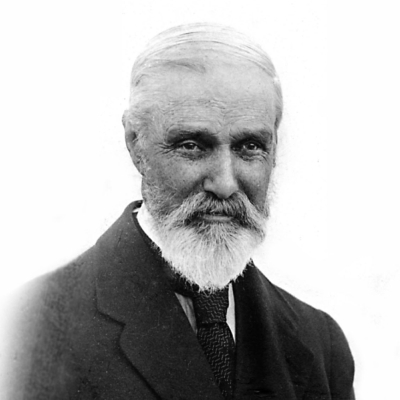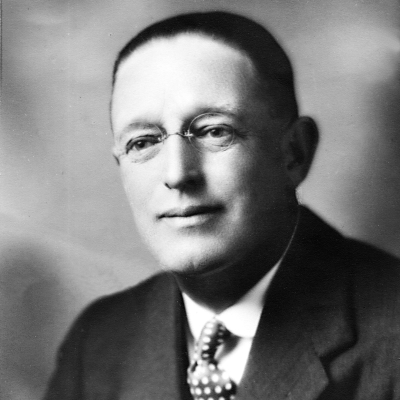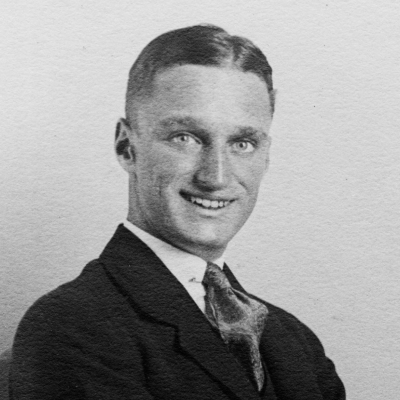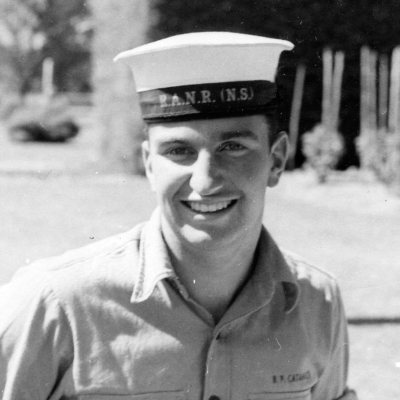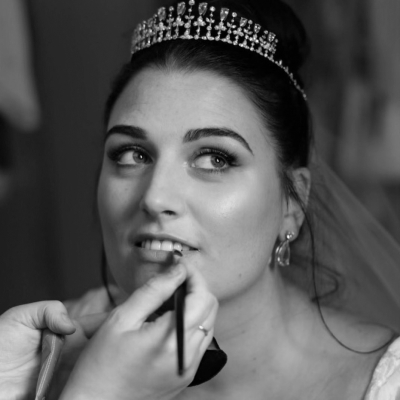Catanach
In the era of William Mercer Catanach, Catanach's Jewellers was to
experience hardship, along with the rest of the world. Two world wars,
the Spanish Flu, the Great Depression — this was a time of austerity
for many. For Australia, we were discovering our national identity in a
post-federation world. A new capital, making our mark in sports
internationally, and even serving up culinary creations that would
come to define us even to the present day. Catanach’s continues its
journey alongside a time of challenges and change.

A partnership is born
Around 1902, at the age of eighteen,
William Mercer joined Catanach's
Jewellers under the mentorship of his
father, George. By 1906, he had risen to
the role of Department Manager — this
meant a wage increase from 3 to 5
pounds weekly! At this time, the store
was divided into different sections,
including diamonds, general jewellery,
watches, and silverware. William worked
closely with George in the jewellery
section, gaining valuable insights into the
entire operation. In September 1906, the
business took on the Catanach & Son
trading name, reflecting George and
William’s partnership.
Flinders Street Station
design competition
When you think of Melbourne, Flinders
Street Station’s iconic building likely
comes to mind. Did you know, the grand
design we know today was chosen via
an architectural competition, with the
winners receiving 500 pounds! With its
distinctive dome and bustling platforms,
Flinders Street Station took 10 years to
complete and continues to serve as a
gateway for commuters and tourists
alike. Take it all in next time you’re
heading to “meet under the clocks”.
World’s first feature film
Cinema history was made on Boxing Day
in 1906 with the premiere of "The Story
of the Kelly Gang" at Melbourne's
Athenaeum. This ground-breaking film
marked the world's first multi-reel
feature-length production, igniting a new
era in filmmaking. The film's portrayal of
the infamous Kelly Gang and its
controversial themes stirred discussions,
making it a sensation of its time. It paved
the way for the future of cinema, leaving
an indelible mark on the art of
storytelling through motion pictures.
William Mercer and
Ruby McAinsh start a
family
In 1908, William Mercer marries his love
Ruby McAinsh, marking the beginning of
a beautiful family. Their journey includes
the joy of welcoming sons William Alan
Catanach in 1909, Peter Brian in 1915
and James ‘Jimmy’ Catanach in 1921.
However, heartbreak strikes with the
loss of Peter in 1923 to influenza at only
7 years old. This tragedy would weigh
heavily on Ruby and William. Left
devastated from her son’s death, Ruby
passed away aged 43 in 1931.
Canberra founded as
Australia’s capital
To foster unity for all the nation’s states,
Australia marked a momentous milestone
in March, 1913 with the founding of
Canberra as its capital. The city,
designed by Walter Burley Griffin, was to be
a symbol of Australia's identity and self-
governance. While we got there in the
end, the development of the city was
delayed with the onset of events to
follow.
World War 1 commences
World World 1 would begin on 28 July
1914, and was endured over four long
years, eventually ending on 11 November
1918. World War 1 cast a shadow of
hardship globally. Australia, alongside
the world, faced challenging times
during this conflict and the aftermath
brought an additional trial with the
outbreak of the Spanish flu in 1919. This
period in history tested the resilience
and solidarity of nations and
communities in the face of adversity.
Bradman makes his
debut
In 1919, the cricketing world witnessed
the emergence of a legend as Sir Donald
Bradman, often hailed as the greatest
cricketer in history, made his debut in
first-class cricket. His extraordinary
journey would eventually lead to the
special moment in 1928 when he
achieved his first international cricket
century. Bradman's unmatched skills and
prolific batting would shape the future of
the sport, leaving a lasting mark on
cricketing history and earning him a
place as a star in the world of sports.
First woman elected to
Australian parliament
Edith Cowan achieved a historic
milestone, becoming the first woman
elected to the Australian Parliament. Her
pioneering entry into politics marked a
significant moment in Australian history,
representing Western Australia. Edith
Cowan's dedication to social justice,
women's rights, and child welfare
initiatives made her a trailblazer in the
political arena. Her legacy continues to
inspire future generations, emphasising
the importance of gender equality and
women's participation in shaping the
nation's policies and laws.
Vegemite established in
Melbourne
A true symbol of Australia was born in
1923 with Melbourne witnessing the
establishment of a culinary icon —
Vegemite. Originally created as a
nutritious by-product of beer production,
Vegemite has become a beloved spread
that is ingrained in our cultural fabric. Its
distinctive flavour and rich history have
made it a staple in Australian
households, showcasing how a humble
invention can evolve into a symbol of a
nation.
William ‘Bill’ Catanach joins
the family business
The eldest son of William Mercer, William Alan
‘Bill’ Catanach entered the family business in
1927, two years following the passing of George
Catanach. Like his father, Bill moved into the
trade without completing a jeweller's
apprenticeship. Despite not being a craftsman,
he had a keen interest in gemstones, so much
so that even from early on in his working life, he
was considered by his peers to be a jeweller, not
simply a retailer. Bill’s early years at Catanach's
allowed him to develop a close relationship with
his father. Their shared love for golf
strengthened their bond, and William took pride
in Bill's golf achievements, including winning the
President's Cup in 1931, later renamed the
Catanach Cup in 1933.
The Great Depression
begins, leading to
economic hardships
worldwide.
The Great Depression was a severe
worldwide economic downturn that
brought with it a period of profound
hardship. It began with the stock market
crash of 1929 in the United States,
leading to a cascade of economic crises
globally. Unemployment, poverty, and
business closures left a mark and
Australia was no exception. By 1932
hundreds of thousands of Australians
were out of work with a peak
unemployment rate of 32 per cent.
A focus on marketing to
tackle hard times
While it was tough times amid the
Depression, the jewellery industry also
experienced a silver lining in many
seeking solace in jewellery purchases. It
was true that money was tight, but for
those who had the funds, jewels were
sought after. The challenge lay in
securing stock. Estate jewellery emerged
as a solution, as individuals sold assets
and their cut stones were reset for
resale. Recognising the need for
strategic marketing, William invested
heavily in advertising, utilising
newspapers, brochures, and radio,
notably on 3UZ.
World War 2 brings about
family tragedy
World War 2 began with Hitler’s invasion of Poland on
September 1, 1939. Both Bill and James ‘Jimmy’
Catanach served in the armed forces at this time. In
January of 1940 Jimmy enlisted in the R.A.A.F. at 18,
earning his wings by April 1941. He was awarded the
Distinguished Flying Cross (DFC) in June of 1942 and,
at the age of 20, Jimmy was promoted to Australia's
youngest squadron leader, posted with the 455th
squadron. However, the Catanach family was to face
another tragedy. Captured in 1942 during a mission
into Russian territory, Jimmy was held as a Prisoner of
War at Stalag Luft III. Participating in the mass escape
attempt renowned as ‘The Great Escape’, he reached
Flensberg before recapture. Hitler ordered his
execution and his grave in the British War Cemetery in
Poznan, Poland has the date of death marked March
29th, 1944.
First in, best dressed
The Depression and the second world
war made finding unset diamonds
difficult due to a shortage. Like in the
first war, demand exceeded supply. With
many men leaving for war, the desire for
diamond engagement rings surged. To
maintain a flow of sales with limited
stock, William would offer five diamond
rings for sale every Saturday morning,
placing them in the window. Couples
would queue up at the store’s entrance
before opening hoping to be first in, best
dressed.
William Mercer
Catanach passes away
William Mercer Catanach had endured
the loss of his first wife, Ruby and his
young son Peter. Losing Jimmy had seen
William’s health deteriorate and within
two years of his son Bill returning from
the war and taking control of the family
business, William Mercer passed away,
aged 65. A respected businessman,
retailer, and diamond expert, William’s
dedication to his staff and his work was
highlighted further when in his will he left
ten percent profit share to Cyril Hall, a
close friend and diamond department
manager.
Jewellery inspired by this era
Buy your own piece of Catanach’s history.

Alan Catanach
and give back to the community through charity work.
Meanwhile, Melbourne was continuing to grow, hosting world
events and more.
